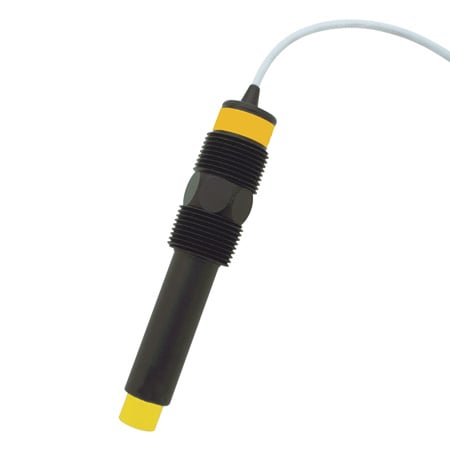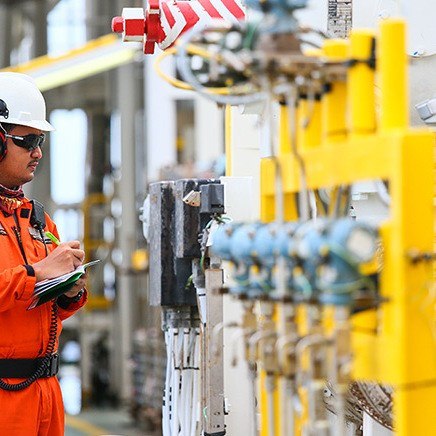Safety should always be the top priority in a facility with production machinery. Proper safety measures help to ensure that your workers are safer, and it’s simply a smart business practice. Shutting down a machine, factory or jobsite to address a safety incident can be expensive in terms of lost work time, lost revenue, as well as possible insurance issues. Safety incidents can also cause additional obstacles in terms of reports, audits, or legal issues.
A step towards a safer work environment starts with creating a culture that puts safety first, beginning with the management and supervisors setting the right example. Management can demonstrate that they take safety seriously. For example, if the company president visits the shop floor, he or she should always put on the safety goggles, boots, or whatever is also required of the staff. If he or she chooses to ignore safety procedures, it will show that staff can also cut corners.
Machine Safety Checklist
Having a safety checklist on hand can help the workers to verify that a worksite is safe. There are many topics related to machine safety that should be considered in any safety plan. These include:
- Mechanical hazards
- Electrical hazards
- Other hazards
- Protective equipment
- Maintenance and repair
- Safeguards
- Training
Most of the safety practices in all of these areas are common sense. The challenge on any factory floor or jobsite is to get in the habit of checking everything every time you use a machine. Often the operation of a machine becomes second nature to a worker, they may not consider what could go wrong or that they are not following the best practices for their own safety.
Here’s a machine safety checklist with questions that can be reviewed regularly. This covers both safety equipment and components, such as limit switches on the machines, but equally important are practices and policies so the workers take the additional steps necessary to avoid putting themselves in jeopardy.
This should be filled out and carefully. Note that the right answer (indicating a safe situation) isn’t always “yes” or “no.” This encourages everyone to pay attention when they review the questions below.
| Potential Safety Hazards | Yes | No | Don't Know |
| Mechanical Hazards | |||
| Are there safeguards at the point of operation? | |||
| Are there any exposed moving parts (chains, belts, gears, fly-wheels, etc.)? | |||
| Are there any other exposed mechanical parts that might be sharp or otherwise hazardous (screws, bolts, edges, etc.)? | |||
| Is the machine properly anchored to the ground or other structures as needed? | |||
| Are the right limit switches installed to stop operation when a limit is exceeded? | |||
| Electrical Hazards | |||
| Was the machine set-up according to applicable codes and standards? | |||
| Is the machine grounded properly? | |||
| Does the power supply have suitable fuses and protection? | |||
| Are all electrical connections tight? | |||
| Are there any shock hazards from open connections? | |||
| Are any hazardous wires or other electrical components suitably labeled? | |||
| Is the floor free of any cords where workers need to move? | |||
| Other Hazards | |||
| Are workers protected against noise from the machine? | |||
| Is the environment conducive to safe worker functioning (temperature, humidity, radiation, etc.)? | |||
| Is lighting enough to operate the machine safely? | |||
| Is the floor dry and safer for worker motion? | |||
| Are required ergonomic features in place (arm rests, keyboard height, display height and angle)? | |||
| Protective Equipment | |||
| Has the proper protective equipment been provided? What additional equipment is needed... | |||
| Have the workers been trained in proper use of the protective equipment? | |||
| Are workers dressed properly to operate the machinery safely (no jewelry, no loose clothing, proper footwear, hair tied back, etc.)? | |||
| Maintenance and Repair | |||
| Is there a maintenance log present at the machine? | |||
| Is the maintenance log up to date? | |||
| Are workers trained in how to review maintenance information to ensure that the machine is ready to use? | |||
| Are maintenance workers trained in safe procedures such as disconnecting the machine from power sources? | |||
| Safeguards | |||
| Is there a master cut-off switch to stop functioning of the machinery? | |||
| Are starting and stopping controls in place and reachable? | |||
| Have starting and stopping controls been tested? | |||
| Are there safeguards against any hazardous materials (lubricants, chemicals, scrap materials, etc.)? | |||
| Are the safeguards suitable for workers of all sizes? | |||
| Is appropriate emergency response equipment available? What additional equipment is needed... | |||
| Is there a first aid kit (including an eyewash station) available? | |||
| Training | |||
| Have all workers present been trained to use the machine properly? | |||
| Have all workers present been trained on the safety features of the machine (safeguards, start/stop controls, etc.)? | |||
| Have all workers present been trained in the proper response for safety issues that might arise? | |||
| Is the machine’s operating manual and other documentation present and current? | |||
| Are operating procedures documented at the machine location? | |||
| Are the electrical, hydraulic, and pneumatic diagrams for the machine available and up to date? | |||
| Are all operating manuals and documentation in the languages understood by the workers? | |||
Customize Your Safety Practices
Along with this white paper and safety questionnaire, encourage responsible safety practices (from management to employees) that are specific to your facility. For example, a workshop with saws, drills, lathes, and other tools designed to cut materials should have procedures in place that pertain to their environment and type of machines. Limit switches should be in place on all such equipment to help protect workers.
A chemical facility where machinery involves handling dangerous chemicals should also have specialized safety practices. This includes obvious precautions like splash guards and protective clothing, but there could also be additional ventilation requirements for certain chemical processing equipment.
Plastic injection molding equipment should have machine guards on all moving parts to protect workers from injury. Safety switches also need to be installed to halt operation of the machine in the event a guard is inadvertently removed.
The Bottom Line
Creating and maintaining a safe workplace is a lot of work. However, you could start by evaluating any risks to your business environment. Are there any safety risks with your current machines or equipment that need addressing with repairs, enhancements, or new equipment? Is any additional safety gear needed for the work staff? Then implement a machine safety checklist and host a training session to explain the checklist and its advantages. Once safety becomes part of your daily routine by: leading by example, utilizing machine safety checklists, and creating procedures and other sound practices for workers, it will become part of how you do business—a safer business.


